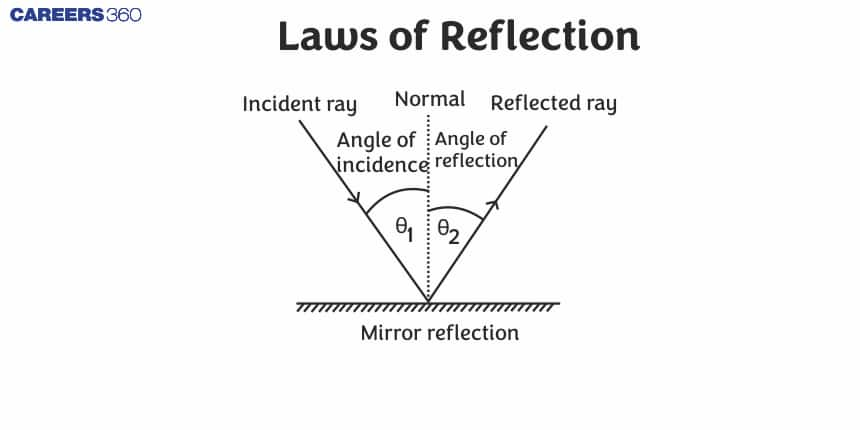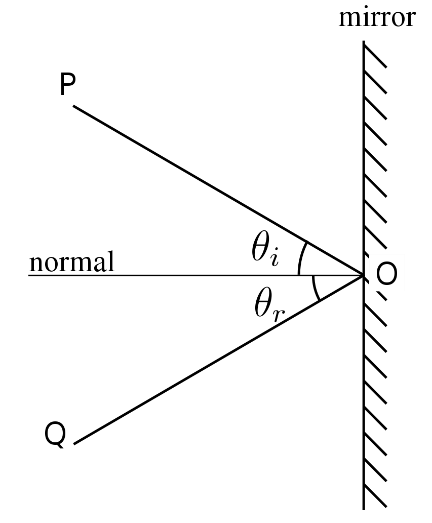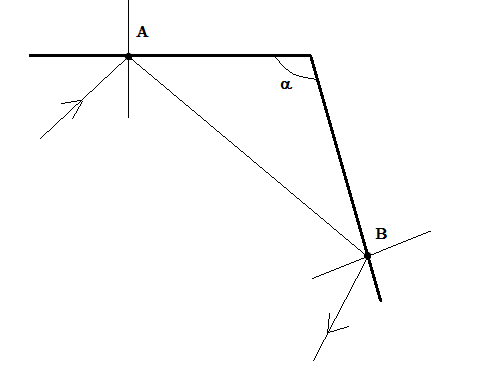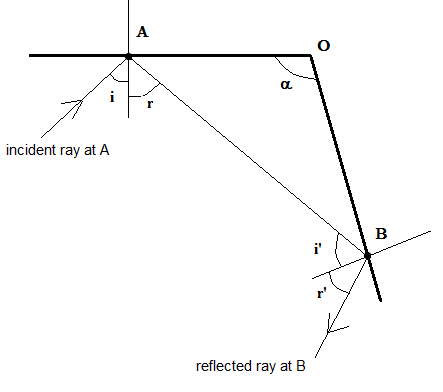Laws of Reflection - Definition, Diagram, Examples, FAQs
Have you noticed how your face looks clear in a mirror? This happens because of reflection. Reflection is the bouncing back of light when it strikes a surface. For example when light falls on a mirror it cannot pass through so it reflects, letting you see your image clearly. This phenomenon is very common in daily life. Reflection is used in cameras, periscopes and other devices to guide light or sound. Light which is a form of energy which cause the sensation of vision can also undergo other phenomena like refraction, diffraction, and interference. Understanding reflection helps explain how light behaves in different situations. Reflection is a very important topic in physics both for school exams and competitive exams like JEE and NEET. It forms the basis of optics.
This Story also Contains
- What is Reflection?
- Laws of Reflection
- How many types of law of reflection are there?
- The Difference Between Regular and Irregular Reflection
- What are the uses of reflection of light?
- Solved Examples on Reflection

What is Reflection?
The phenomenon when a ray of light strikes an opaque surface, it bounces back instead of passing through it is called reflection. We can see objects and images in mirrors or on reflective surfaces with the help of reflection.

Laws of Reflection
There are two laws of reflection that help to describe how light reflects off surfaces. These laws are:
- The Angle of Incidence is always equal to the Angle of Reflection
$\theta_i=\theta_r$ - The Incident Ray, the Reflected Ray, and the Normal at the point of incidence lie in the Same Plane
How many types of law of reflection are there?
There are two types of reflection:
- Regular (Specular) Reflection
- Irregular (Diffuse) reflection
Regular (Specular) Reflection: Regular Reflection occurs when light falls on a smooth surface and as a result, it creates a clear, and sharp image. The reflected rays are parallel to each other.
This smooth surface can be a mirror. A mirror is made of glass coated with a reflective material. This reflective material helps in reflecting light incident on it uniformly.
Example: Reflection in a plane mirror.
Irregular (Diffuse) reflection: When light falls on an uneven surface, it scatters in different directions, and as a result, no clear image is formed. This type of reflection is called Irregular reflection. This uneven surface can occur due to scratches, wear and tear, dirt on the surface, or due to the material of the surface.
The Difference Between Regular and Irregular Reflection
|
S. No. |
Regular Reflection |
Irregular Reflection |
| 1 | When all reflected rays from a smooth surface are parallel to incident rays. | This is when incident parallel rays do not remain parallel to each other, the reflected rays do. |
| 2 | Smooth surfaces, such as mirrors, silver spoons, etc. provide this texture. | Rusty surfaces such as wood, doors, tables, books, etc. provide this texture. |
What are the uses of reflection of light?
- Periscopes use reflection to observe advancing enemies on the battlefield from a safe distance.
- We see objects because of reflections.
- Mirrors with concave and convex lens surfaces can reflect a variety of different images.
- Medical diagnostics rely on reflection, as does optical path communication.
- The law of reflection governs both light and sound, as both are waves.
- Our ability to measure distances accurately to objects is based on the law of reflection for sound and light.
- The echoes of sound are the result of reflections.
Solved Examples on Reflection
Q1. An incident ray of light strikes a plane mirror at an angle of $30^{\circ}$ with the mirror surface. Approximately what angle will the reflection be?
Solution:
The angle of incidence is determined by comparing the incident ray with the normal, so it is not 60° in this case
Following the Law of reflection,
$
\theta \mathrm{i}=\theta \mathrm{r}
$
Hence,
The angle of reflection $=600$

Q2: Determine the angle * which would be made by the system of the two mirrors shown in the figure below so that A and B are parallel to one another.

Solution:
Here is a diagram in which we fill in the angles of incidence and reflection and also label the rays as they are incident and reflected.
Angles I + r and i' + r’, which represent the incident wave at A and the reflected wave at B, have to be supplementary. (Geometry: cross-section cut between parallel lines).
Therefore,
$
i+r+i^{\prime}+r^{\prime}=180^{\circ}
$
As a result of the law of reflection, $\mathrm{i}=\mathrm{r}$ and $\mathrm{r}^{\prime}=\mathrm{i}^{\prime}$
Substitute to obtain
$
\begin{aligned}
& i+i+i^{\prime}+i^{\prime}=180^{\circ} \\
& i+i^{\prime}=90
\end{aligned}
$
In triangle $A O B$, we have
$
\begin{aligned}
& \alpha+(90-r)+\left(90-i^{\prime}\right)=180^{\circ} \\
& \alpha=r+i^{\prime}=i+i^{\prime}=90^{\circ}
\end{aligned}
$
If $\alpha=90^{\circ}$, the downward ray passes through $A$ and the upward ray passes through $B$.
Frequently Asked Questions (FAQs)
- Mirrors for personal grooming and vehicles.
- Optical instruments like telescopes and microscopes.
- Periscopes and other devices to change the direction of light.
- Safety devices like road signs and reflectors.
Regular (Specular) Reflection: Light reflects from a smooth surface, forming a clear image.
Irregular (Diffuse) Reflection: Light reflects from a rough surface and scatters in many directions, producing no clear image.
First Law: The incident ray, reflected ray, and the normal at the point of incidence all lie in the same plane.
Second Law: The angle of incidence is equal to the angle of reflection.
Periscopes use reflection to observe advancing enemies on the battlefield from a safe distance.
We see objects because of reflections.
The light is reflected back into the denser medium when it passes from a denser medium to a lighter medium at an angle greater than the critical angle for refraction. Total Internal Reflection refers to this phenomenon.
Objects beyond the focus of a concave mirror give real, inverted images. Objects within the focal range of a concave mirror give a virtual, erect, enlarged image.
It is known as the reflection of light when light rays hit the surface and bounce back.
A smooth surface is defined as having an angle equal to that of the reflected ray on reflection. The angle is equal to the angle between the incident and reflected rays that is parallel to the line perpendicular to the surface at the point of contact.